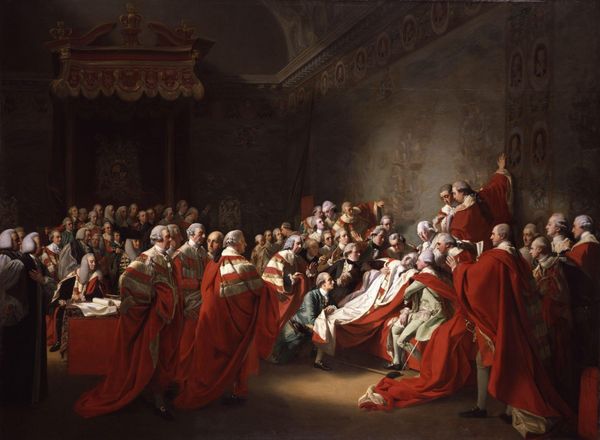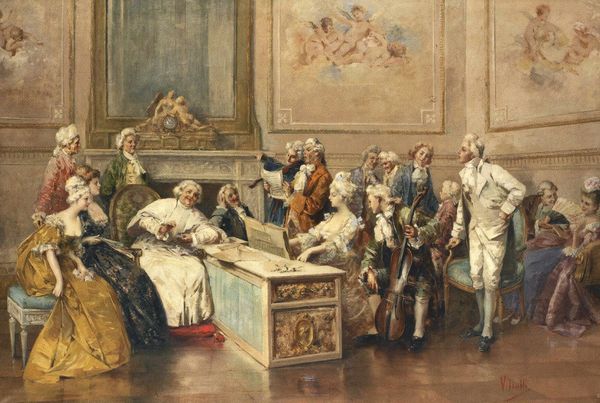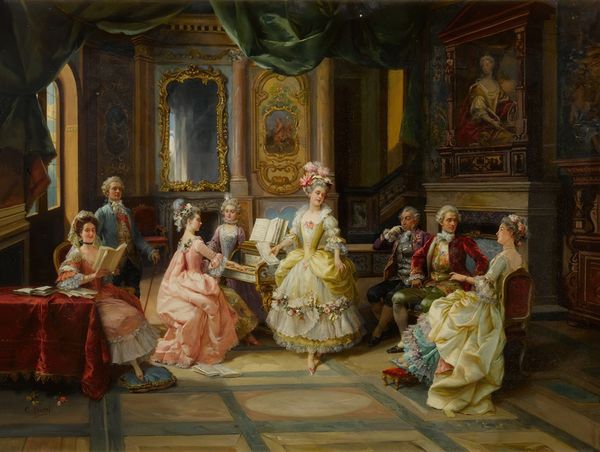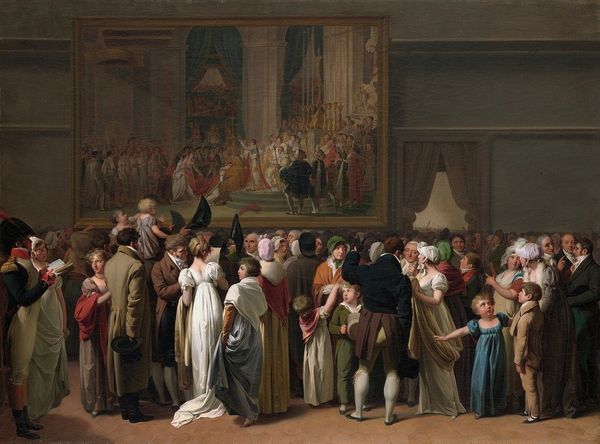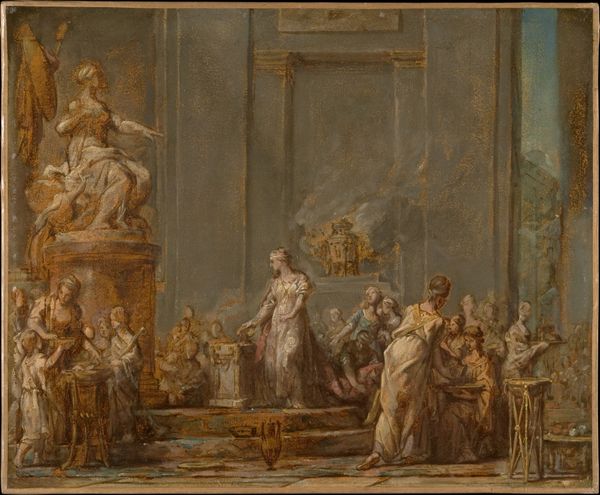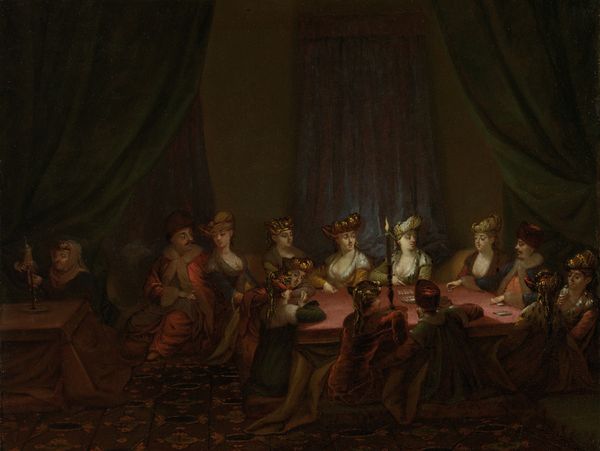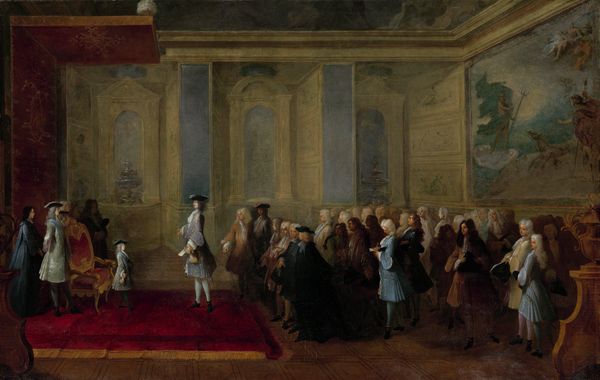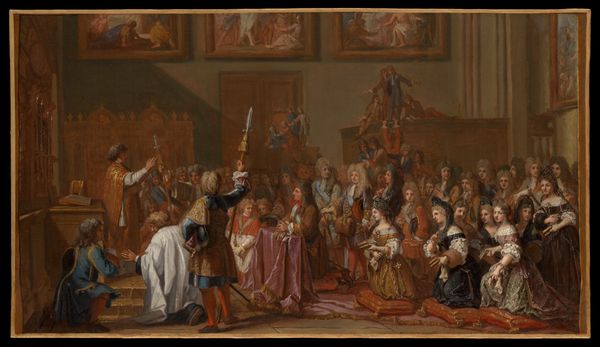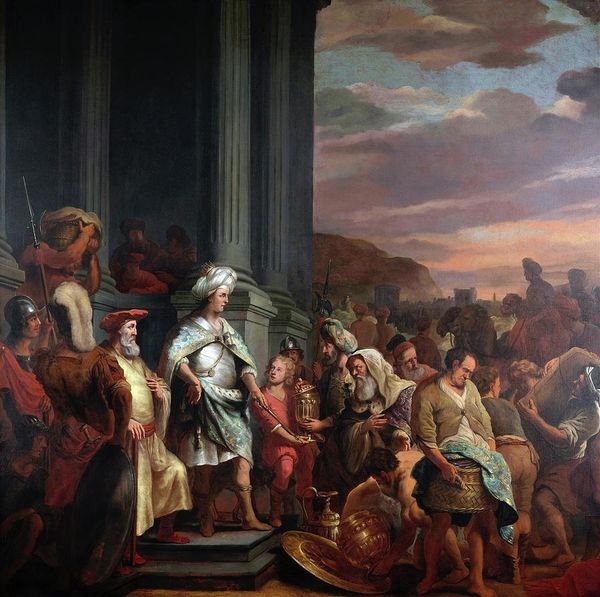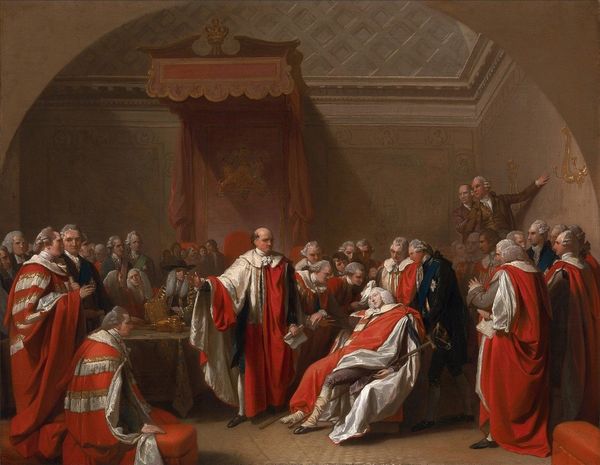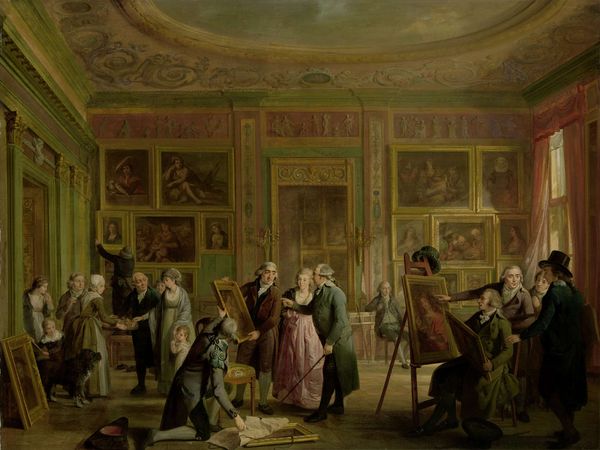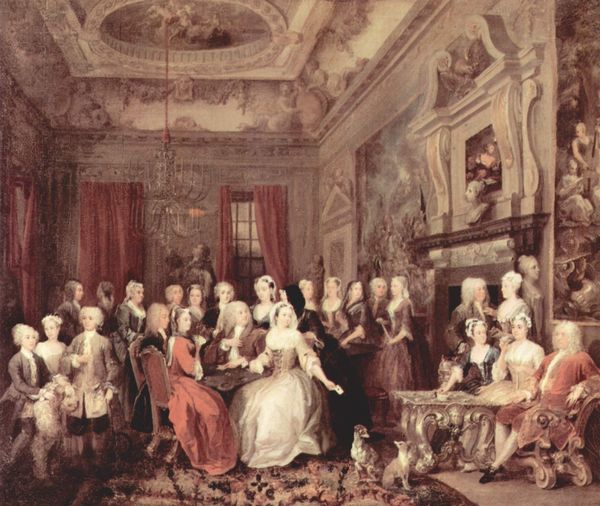
painting, oil-paint
#
portrait
#
baroque
#
painting
#
oil-paint
#
islamic-art
#
genre-painting
#
mixed media
Dimensions: height 55.5 cm, width 90 cm
Copyright: Rijks Museum: Open Domain
Curator: Let's take a look at this captivating painting, "Greek Wedding," attributed to Jean Baptiste Vanmour and believed to have been created sometime between 1720 and 1737. Vanmour, of course, was a pivotal figure in what we call Orientalism. Editor: Wow, it’s like stepping into a jewel box. The colors are so rich, and there's a definite air of theatricality about it, almost like watching a play unfold. Curator: Indeed. Vanmour’s genre paintings are crucial visual documents of Ottoman society in the early 18th century. Remember that he wasn’t just passively observing; he was actively interpreting, performing his own perspective within the framework of colonial power dynamics. Think about whose gaze is centered here. Editor: Makes me think, are we looking through a keyhole? There's this wonderful mix of staged formality and whispered gossip. You can almost hear the rustle of silk and the hushed tones. I’m also struck by the complete absence of men—it highlights female space. Curator: Precisely. Considering this, we must acknowledge that this portrayal could reproduce stereotypes or contribute to existing power imbalances of gender, which is important to recognize when we view it. It's also useful to explore these intercultural exchanges, asking questions about access and agency for Ottoman women within the harem and public life. Editor: That's such a valid point, the whole notion of the "harem fantasy" in European art and literature…I guess it reminds us how art can reflect cultural misunderstandings as much as insights. Still, the painter in me gets lost in those textures, those headdresses…they practically beg to be rendered in thick, impasto paint! Curator: Yes, the materiality cannot be ignored, this elaborate composition showcases Vanmour's refined technique with oil paints, highlighting details that could invite questions of how baroque elements interact with Orientalist themes of the 18th century. What this painting, therefore, might offer modern observers is insight on the early roots of what has today transformed into popular visual tropes of the orient, alongside its power laden implications. Editor: It’s given me a whole new lens to look at how stories are visualized and interpreted through art. So many assumptions to untangle. Curator: Absolutely, looking through multiple critical lenses, whether they are social, historical or purely aesthetic helps keep this image alive today, and relevant.
Comments
rijksmuseum about 2 years ago
⋮
A Greek bride sits on a low platform, surrounded by family and friends. Her mother and mother-in-law welcome visitors. The bride receives gifts of gold jewellery and sumptuous cloth from her guests. In keeping with sumptuary laws (dress codes), the women do not wear veils inside the house. It is impossible to distinguish between the Greek and Turkish women based on their indoor attire.
Join the conversation
Join millions of artists and users on Artera today and experience the ultimate creative platform.
